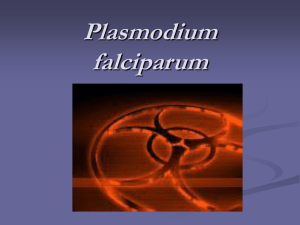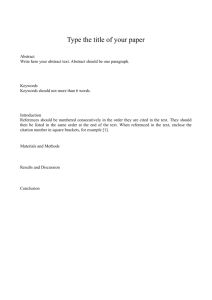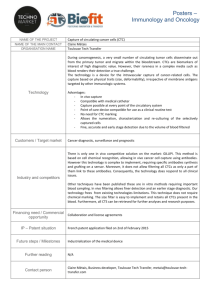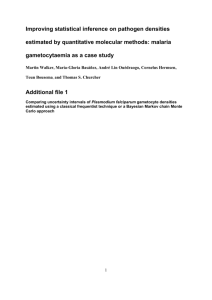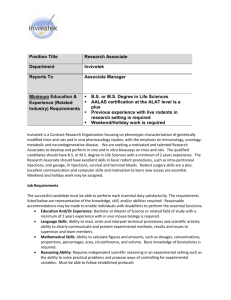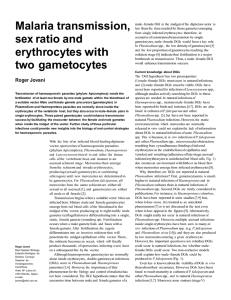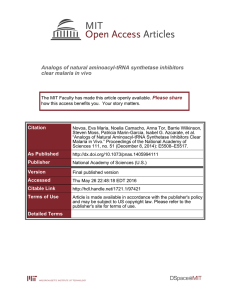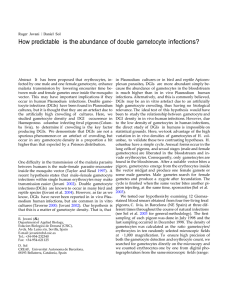In vivo profiles in malaria are consistent with a novel
advertisement
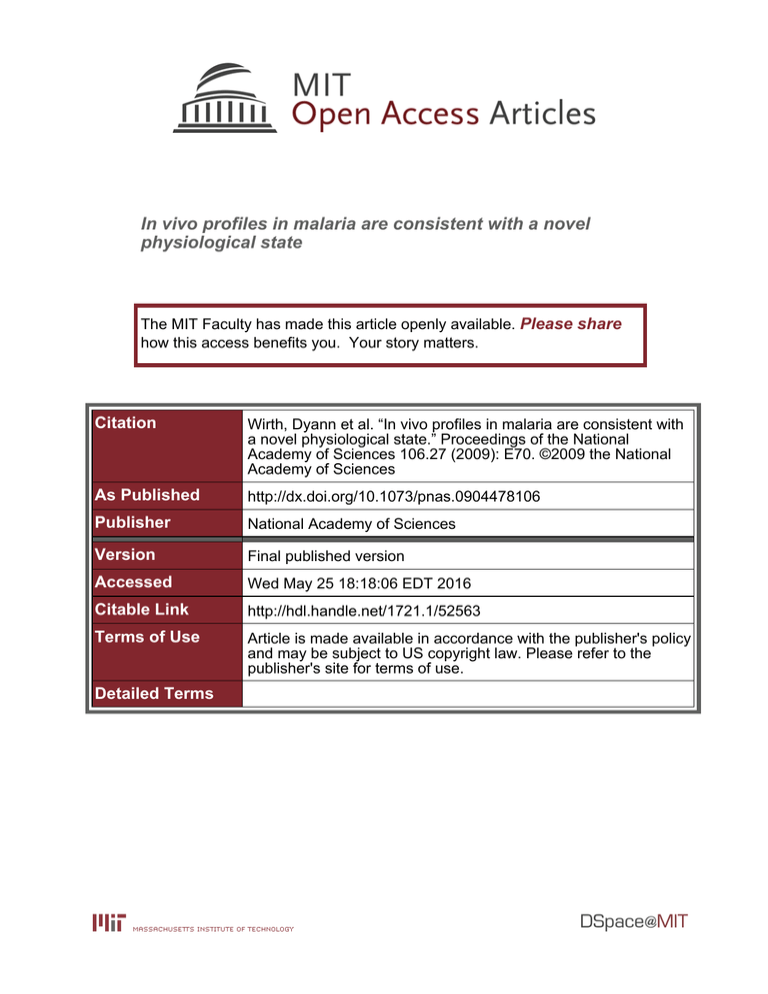
In vivo profiles in malaria are consistent with a novel physiological state The MIT Faculty has made this article openly available. Please share how this access benefits you. Your story matters. Citation Wirth, Dyann et al. “In vivo profiles in malaria are consistent with a novel physiological state.” Proceedings of the National Academy of Sciences 106.27 (2009): E70. ©2009 the National Academy of Sciences As Published http://dx.doi.org/10.1073/pnas.0904478106 Publisher National Academy of Sciences Version Final published version Accessed Wed May 25 18:18:06 EDT 2016 Citable Link http://hdl.handle.net/1721.1/52563 Terms of Use Article is made available in accordance with the publisher's policy and may be subject to US copyright law. Please refer to the publisher's site for terms of use. Detailed Terms LETTER In vivo profiles in malaria are consistent with a novel physiological state Lemieux et al. (1) describe a reanalysis of our in vivo Plasmodium falciparum patient samples (2), supporting many of our conclusions (exclusive presence of rings, lack of distinct asexual phases in the clusters, a relation between Cluster 1 and gametogenesis). However, Lemieux et al. (1) fit the observed in vivo profiles as a mixture of gametocyte and asexual form mRNA (Fig. 2E in ref. 1), concluding that the discrete clusters are consistent with varying proportions of sexually committed but phenotypically indistinguishable parasites, reflected by the parameter ␣. This interpretation is problematic on both computational and biological grounds. From a computational perspective, all Cluster 1 samples in their model have very similar, unique, and high ␣ values (⬇0.6). This implies that these patients had a very similar fraction of gametocytes, a highly unlikely situation. Furthermore, comparable ␣ values are obtained in vitro only at a high fraction of phenotypically observable gametocytes (Figs. 2E and S8 in ref. 1). None of the patient samples in the study had a high fraction of gametocytes and in most patients, gametocytes were not detected by microscopy at all. Even a high gametocyte contamination rate in an in vivo sample could not explain the observed ⬎20-fold decrease in the expression of glycolysis-related genes without any substantial expression differences in many other sexual development genes that are not involved in metabolism. In particular, several markers of early gametogenesis (Table 1 and Fig. 2 in ref. 3) do not show any consistent induction pattern in Clus- E70 兩 PNAS 兩 July 7, 2009 兩 vol. 106 兩 no. 27 ter 1. In more minor points, Lemieux et al. (1) raise differences in signal intensities in 2004 samples. However, our clustering is independent of these samples, and none are present in Cluster 1 or 2. The lack of signal in ex vivo samples reported by Lemieux et al. (1) is also irrelevant, because these were cultured in typical (rich) conditions. The main commonality between Cluster 1 and gametocyte profiles is the shift from glycolysis to a mitochondrial metabolism. However, this does not necessarily mean that Cluster 1 is contaminated with gametocytes. An alternative explanation for the distinction between Cluster 1 and 2 is the presence of an additional transcriptional state, which is not observed in vitro, but bears some similarity to gametocytogenesis in relevant transcription modules (Fig. S6 B and C and Supplementary Note 1 in ref. 2). This connection is highly plausible, because starvation and the production of sexual forms are intimately connected in organisms as diverse as bacteria, yeast, and Plasmodium. Dyann Wirtha,1, Johanna Dailya, Elizabeth Winzelerb, Jill P. Mesirovc, and Aviv Regevc a Harvard School of Public Health, Boston, MA 02115; bThe Scripps Research Institute, La Jolla, CA 92037; and cEli and Edythe L. Broad Institute of MIT and Harvard University, Cambridge, MA 02142 1. Lemieux J, et al. (2009) Statistical estimation of cell-cycle progression and lineage commitment in Plasmodium falciparum reveals a homogeneous pattern of transcription in ex vivo culture. Proc Natl Acad Sci USA, 10.1073/pnas.0811829106 2. Daily JP, et al. (2007) Distinct physiological states of the parasite Plasmodium falciparum in malaria infected patients. Nature 450:1091–1095. 3. Pradel G (2007) Proteins of the malaria parasite sexual stages: expression, function and potential for transmission blocking strategies. Parasitology 134:1911–1929. Author contributions: D.W., J.D., E.W., J.P.M., and A.R. analyzed data; and D.W., E.W., and A.R. wrote the paper. The authors declare no conflict of interest. 1To whom correspondence should be addressed. E-mail: dfwirth@hsph.harvard.edu. www.pnas.org兾cgi兾doi兾10.1073兾pnas.0904478106
